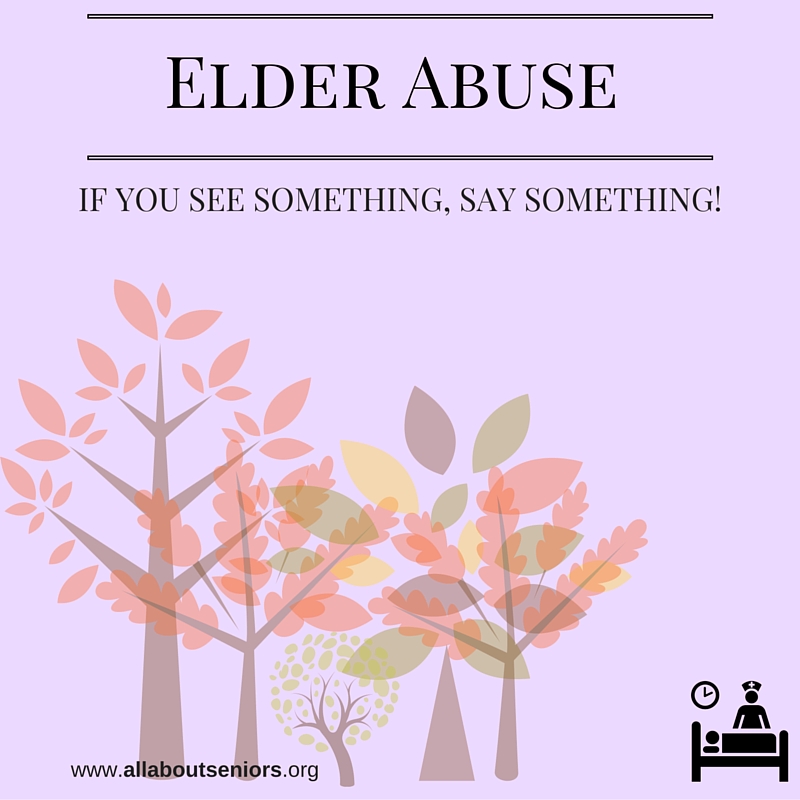
The Administration on Aging defines Elder Abuse as “a general term referring to any knowing, intentional, or negligent act by a caregiver or any other person that causes harm or serious risk of harm to a vulnerable adult.”
Law and definitions may vary from state to state, but elder abuse is abuse, and it is important to be aware of the signs.
More than 41 million Americans are 65 or older, and elders comprise a growing proportion of the U.S. population
Types of Elder Abuse
- Physical Abuse – inflicting physical pain or injury on a senior
- Sexual Abuse – non-consensual sexual contact of any kind
- Neglect – the failure of those responsible to provide food, shelter, health, or protection for a vulnerable elder
- Exploitation – the illegal taking, misuse, or concealment of funds, property, or assets of a senior
- Emotional Abuse – inflicting mental pain, anguish, or distress on an elder person
- Abandonment – desertion of a vulnerable elder by anyone who has assumed the responsibility for care or custody of that person
- Self-neglect – characterized as the failure of a person to form essential, self-care tasks and that such failure threatens his or her own health or safety
1 in 10 Americans age 60+ experienced abuse over one year, and many experienced it in multiple forms.
Does someone that you know – a senior or an adult with a disability – display any warning signs of mistreatment? Most cases of elder abuse go undetected. Don’t assume that someone else has already reported a suspicious situation.
If you see something, say something!
Red Flags of Abuse
Neglect
- Lack of basic hygiene, adequate food, or clean and appropriate clothing
- Lack of medical aids
- Person with dementia left unsupervised
- Person confined to bed is left without care
- Home cluttered, filthy, in disrepair, or having fire and safety hazards
- Home without adequate facilities
- Untreated pressure (bed) sores
Financial Abuse/Exploitation
- Lack of amenities victim could afford
- Vulnerable elder/adult “voluntarily” giving financial gifts
- Caregiver with control of elder’s money, but failing to provide for elder’s needs
- Vulnerable elder/adult has signed property transfers, but is unable to comprehend the transaction or what it means
Psychological/Emotional Abuse
- Unexplained or Uncharacteristic changes in behavior
- Caregiver isolates elder
- Caregiver is verbally abusive, aggressive, or demeaning
Physical/Sexual Abuse
- Inadequately explained fractures, bruises, welts, cuts, sores or burns
- Unexplained sexually transmitted diseases
Elder Abuse is underreported. The New York State Elder Abuse Prevalence Study found that for every elder abuse case known to programs and agencies, 23.5 were unknown. In the same study, they examined different types of abuse and found for each case of financial exploitation that reached authorities, 44 cases went unreported. The National Elder Abuse Incidence Study estimated that only 1 in 14 cases of elder abuse ever comes to the attention of authorities.
Anyone can be a victim. However, there are things you can do to help protect yourself from abuse and neglect.
Plan ahead. Talk with family members, friends, and professionals that you trust to plan for your future. Consider speaking with an Elder Attorney and Financial Planner to get your estate in order.
Be cautious. Unscrupulous people target seniors and will abuse or take advantage of them. Educate yourself on the types of elder abuse and neglect.
Stay connected. Keep in touch with others. Isolation can make you vulnerable to elder abuse. Keep active and stay busy. Create a buddy system with other elders.
Report! Making a report in instances of elder abuse or neglect is the right thing to do, and it’s easy. Don’t be afraid! Elders have a right to be safe.
Elder abuse costs victims billions of dollars each year. The annual financial loss by victims of elder financial exploitation was estimated to be $2.9 billion in 2009, a 12% increase from 2008.
sources:
http://www.ncea.aoa.gov/index.aspx
http://www.aoa.gov/aoa_programs/elder_rights/ea_prevention/whatisea.aspx



